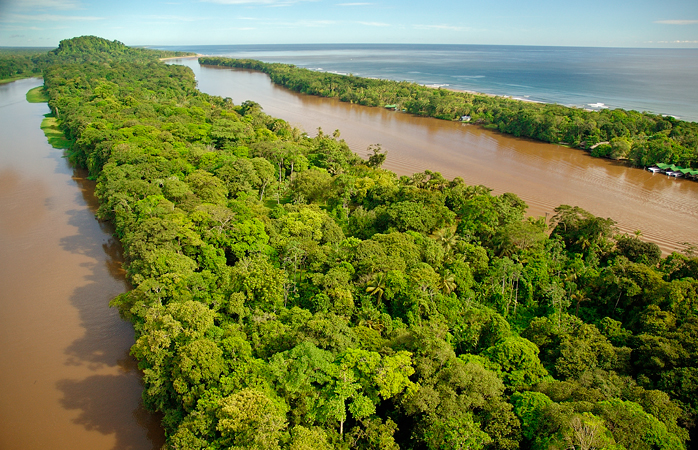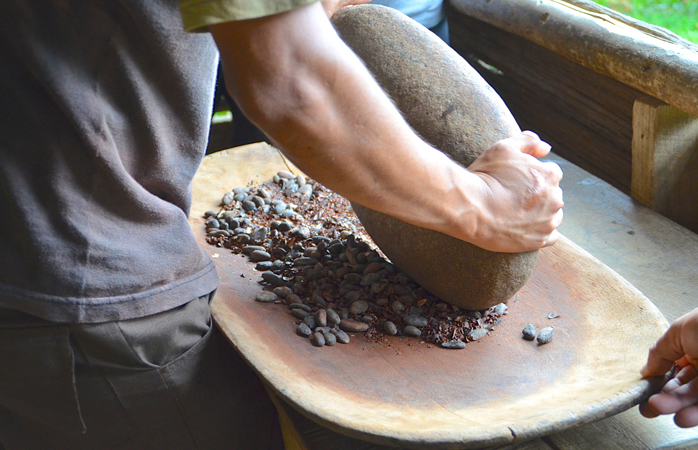Traveling to Costa Rica: Things to see, things to do
With our list of must-do things in this land of ‘pura vida’ (pure living), you can take advantage of the wonderful tropical outdoor possibilities to the fullest.
Wander the streets of San Jose

Don’t let stories of urban turmoil and pickpocketing intimidate you. Beneath the raucous surface of the Costa Rican capital lies enough tacky charm to make it much more than a stopover. Head to the historic Barrio Amón in the north and wander among the tropical Victorian mansions of former coffee barons that provide clues to the country’s colonial past. The National Theater, a beloved neoclassical building, was also financed by the voluntary taxes of these coffee emperors and has a lovely café where you can sit back and have a mug of ‘grano del oro’ (golden coffee beans). Also in this area are the Museo del Jade, which has the world’s largest collection of American jade, and the Pre-Columbian Gold Museum, which shines a bright display of Central America’s indigenous heritage. You can end the day in the ‘lungs’ of San José, or La Sabana Metropolitan Park, as the ‘Joséfinos’ (San José natives) call it. What was the city’s main airport until 1955, is now a green oasis bordered by the cityscape, with a skating rink, a lake where paddle boats can be hired, and stalls selling spicy green mango slices. If you go here on the weekend, you can also join the early morning outdoor aerobics sessions.
Visit a volcano

Hearing that Arenal Volcano, one of more than a dozen volcanoes in Costa Rica and until recently the most active volcano, hasn’t erupted since 2010, may comfort or upset you, depending on your degree of lava curiosity. Although young by volcano standards, this 7,500-year-old rift is now dormant, it is an impressive hiking adventure offered by the 12,000-hectare National Park it is located in. To tour the park, you can use the winding road formed by 16 interconnected bridges, 6 of which stretch over the dense forest. Don’t forget to look up as you travel, because there are 850 bird species flying around here! To raise your adrenaline level a little more, you can go white water rafting, waterfall descent or join a canopy tour. At the end of the day, a great reward awaits you for your courage. The natural hot springs are the result of the geothermal activity of this area and you can find many types such as hot and cold pools illuminated at night, water skis and those with poolside bars.
Explore underground caves
Discovered by hunters in 1942 and not far from Arenal, the Venado Caves offer another adventurer’s delight: cave exploration! You can dig deep into the earth, crouching through the 5-million-year-old bat-friendly caverns, and examine the fossilized sea life and shells from the cave’s seawater-filled past that protrude from the walls. Although this place is no longer below sea level, a small current will accompany you along the way, so you should be prepared to get a little wet. Expert cave explorers looking for a challenge may prefer the less developed but more challenging caves in Barra Honda National Park in the Guanacaste region.
Take a canal cruise by boat in Tortuguero

If you think you’ll love cruising through calm waters and slowly absorbing the rainforest sights and sounds, you’ll love Tortuguero National Park on the Caribbean coast. Accessible only by sea or air, this protected area is home to 11 habitats, including swamps, ponds, beaches and mangrove forests. Here you can take a boat tour and put yourself in the hands of a guide to discover timid wildlife, or canoe through the green-lined canals. Costa Rica, which has only 0.3% of the world’s land and 5% of the biodiversity on our planet, is also the world leader in ecotourism. By booking a bungalow, you can take the opportunity to dive even deeper into this remote forest. For many people, the main tourist attraction here is the clumsy but graceful creatures that give it its name, the hundreds of sea turtles that flock to the beaches here to lay their eggs from July to October. If you’re around 60 to 80 days after their visit, you can also see the tiny newly hatched fry competing with each other to throw themselves into the safe arms of the ocean!
Become a coffee expert

Coffee drinkers and gourmets will be delighted to learn that some of the country’s farms offer guided tours of their plantations. Finca Rosa Blanca is one of those farms dedicated to producing organic, sustainable, shade-grown coffees and is happy to show you how they do it. In this experience, an expert in all aspects of coffee takes you around the planting areas, processing factory, roasting house, and then takes you to a professional tasting session called ‘catación’. Those who are not good with caffeine can visit the Villa Vanilla farm, which has the same ecological seriousness and specializes in vanilla, cinnamon, cocoa, turmeric, black pepper and other tropical spices. This tour also includes tasting events with a variety of flavors such as fresh vanilla cheesecake made with local produce from the farm and cinnamon tea.
Camp in Corcovado

One of the centers of the gold rush frenzy in the mid-20th century, the Osa Peninsula is nowadays one of the quieter corners of Costa Rica. Covering one-third of the peninsula and home to 13 ecosystems, along with Corcovado National Park, the largest national park in the country, Osa is truly a natural paradise. You can go to the park for a camping trip, visit the La Llorona (‘Crying Woman’) waterfall that sheds tears on the beach, or play the game ‘find the tapir’ in Lake Corcovado. Horseback riding on the trail is also a popular activity here. If you are interested in marine life, you can head to Drake Bay to watch dolphins and whales. While humpback whales appear mid-December to March and July to November, friendly dolphins can be spotted splashing around here any time of year.





